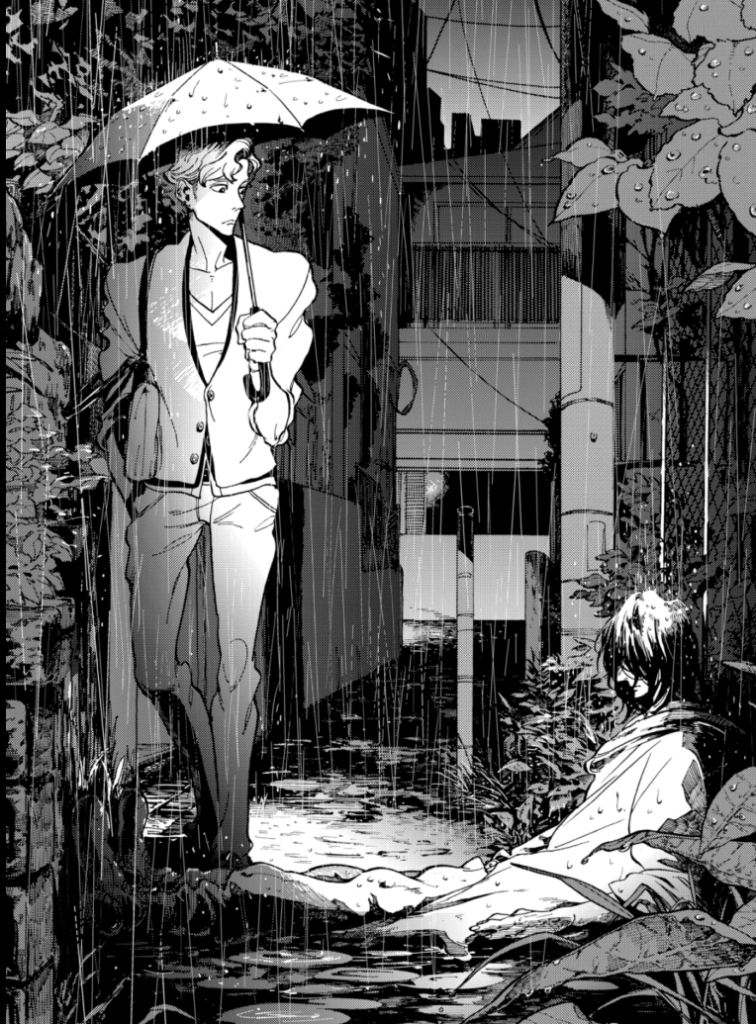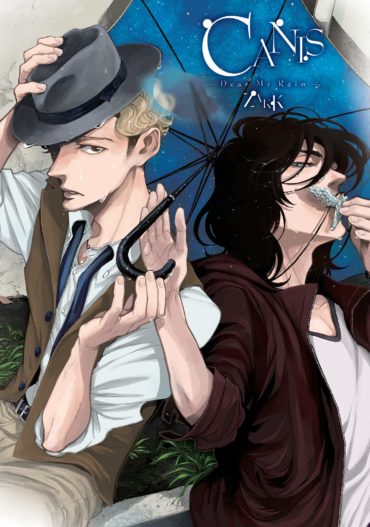CANIS: Dear Mr. Rain Review
Satoru Kutsuna is a young hatter who’s making a name for himself in the world of fashion. But he’s going through something of a slump. He owns a shop, Dante – The Hat, and makes the hats he sells on the premises, aided by two long-suffering assistants, A-ko and B-man. Because of his high standards and creative temperament, Satoru keeps losing/firing apprentices – and as a three years’ anniversary fair looms ever closer, he’s desperately in need of a third assistant in the shop. Which is when, out for a night walk in the rain to clear his head, he stumbles over a young man sprawled in the gutter. Satoru once rescued an abandoned puppy on a rainy day – and finds himself rescuing the young man, feeding him (he’s famished!) and giving him shelter. Why? The reasons are complex – but first and foremost, Satoru needs someone to help out in the shop for the fair and to model the hats. Once scrubbed up, the good-looking young man makes an ideal ‘living’ mannequin – and he’s eager to help repay Satoru’s kindness. But he’s shrouded in mystery. Ryou Kashiba has come to Japan from New York on a mission. He’s a marked man. He’s gotten himself involved with the wrong people – snippets of news filter through on the radio playing in the background about arrests made in New York of members of the Italian mafia – and when he tells Satoru in a matter-of-fact way that he’s come to Japan to die, the hatter doesn’t know what to believe, only that after Ryou walks away from the shop, he finds it impossible to concentrate on anything, wondering what will become of him…

Dear Mr. Rain is the first volume of an ongoing sequence CANIS: the next two volumes, Dear Hatter, continue the story of Satoru and Ryou – and the next two, The Speaker, explore the events in the past that led up to Ryou and Satoru’s first meeting. So this is very much an introductory volume. The manga originally appeared quarterly in OPERA, the BL manga magazine that specializes in ‘different’ mangaka: it’s the home of Asumiko Nakamura’s Doukyusei and its ongoing sequels and Syundei’s Ganbare! Nakamura-San (both published in the West by Seven Seas).
So why call the series CANIS (‘dog’ in Latin)? Through flashbacks, we see Satoru’s beloved canine companion, Kotarou, a stray he rescued when he was little. We also see glimpses of Satoru’s relationship with his loving, supportive grandmother – and the story she used to read to him that directly influenced his decision to become a hatter. Whereas the glimpses ZAKK delivers of Ryou’s adolescence, growing up on the mean streets of New York, make a stark contrast.

ZAKK’s art style is striking: distinctive and attractive, well-suited to a story that’s set partly in New York as she seems to have absorbed American comic influences yet made the end result very much her own. Her characters are not conventionally ‘pretty’ in manga art terms but certain images are quite breath-taking, especially the full-page panel when Satoru first finds Ryou. This series is that rare treasure: manga for grown-ups. There’s plenty the reader needs to pay attention to but the story never fails to communicate. It repays several readings, not just for the pleasure of the art and the story-telling, but also because there’s so much detail embedded in the panels. 
It’s taken a while for ZAKK’s ongoing series CANIS to get an English release and the team behind KUMA, a new spin-off list from Fakku, are to be congratulated for making this their third release. If you’re looking for a manga with charismatic characterization, a complex and involving plot, enlivened with touches of charming, quirky humour and moments of heartbreak, then ZAKK is the mangaka you’ve been waiting for. Notice, I haven’t yet mentioned the fact that it’s BL. In this first volume, there’s hardly anything that would strike the reader that it is BL until – well, no spoilers here. However, this is also (compared to many manga) quite a challenging read (not a criticism!). ZAKK seeds all kinds of little hints that will become relevant as the story develops, many visual clues are planted in the panels – but most of them won’t bear fruit until the next two volumes.
One of the advantages of the digital release means that the reader can enlarge ZAKK’s wonderfully detailed panels and pick out all kinds of fascinating little details in the art so easily missed in the physical print edition (still to be released, at the time of writing because of pandemic delays but hopefully available by early September). The translation reads really well, capturing ZAKK’s gift for sizzling dialogue, but KUMA gives the names of the whole production team rather than singling out individuals, such as the translator.
Dear Mr. Rain is a must-read – but it will make even more sense when read in the context of the next two volumes, so pretty please, KUMA, don’t make us wait too long and bring us CANIS: Dear Hatter soon!
© ZAKK 2013


